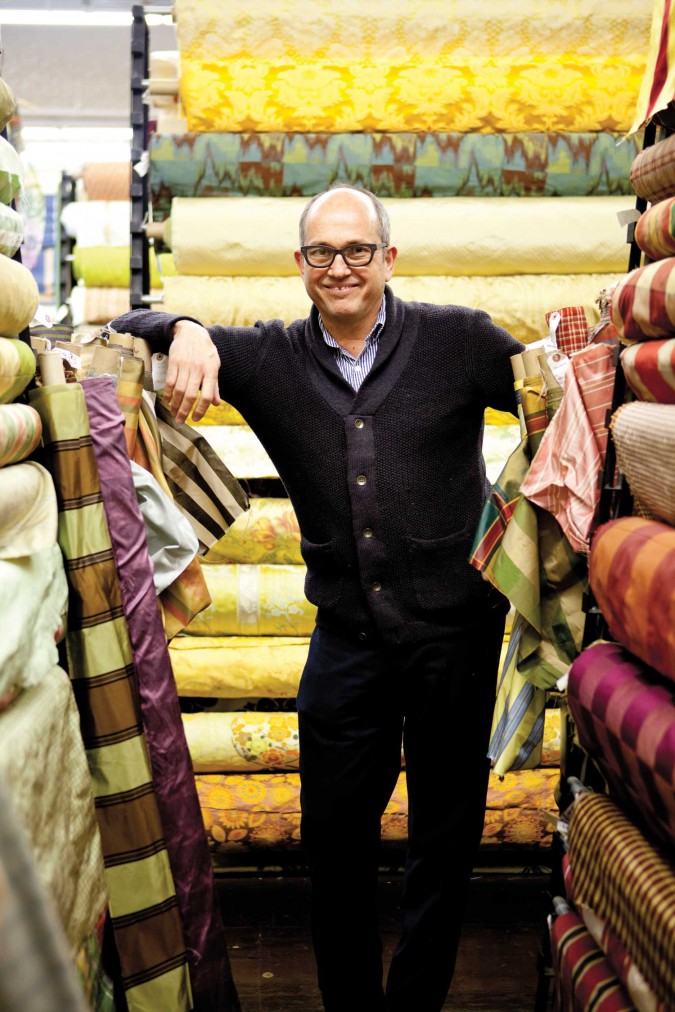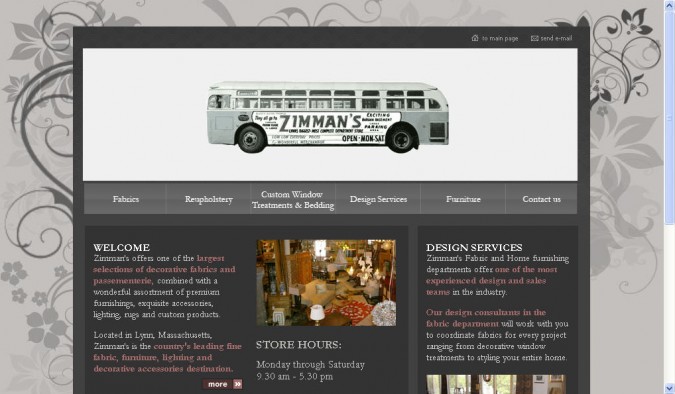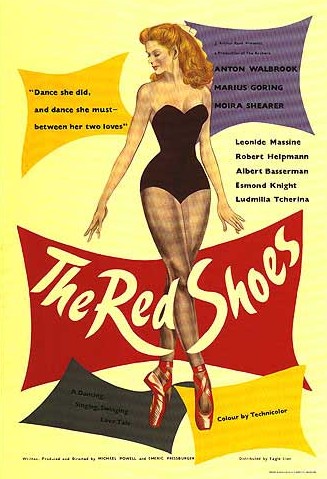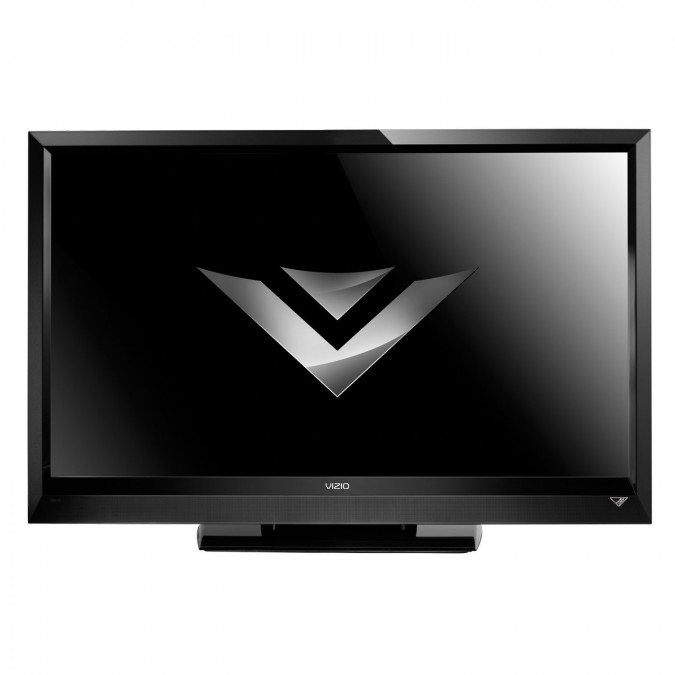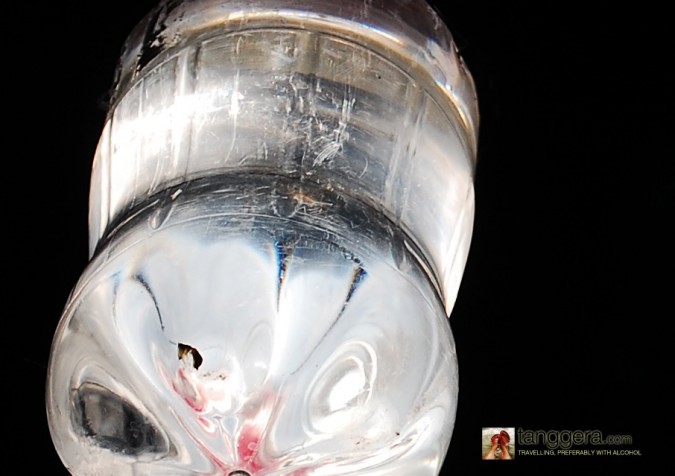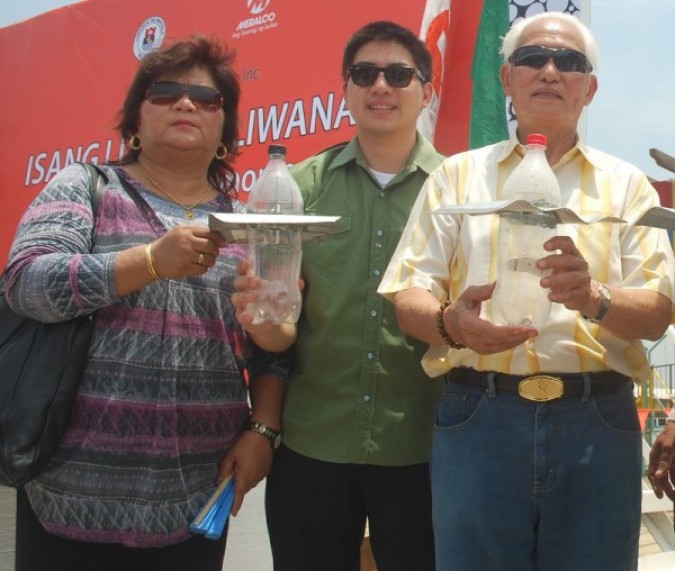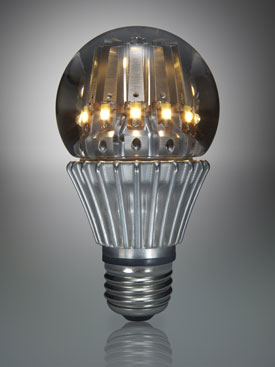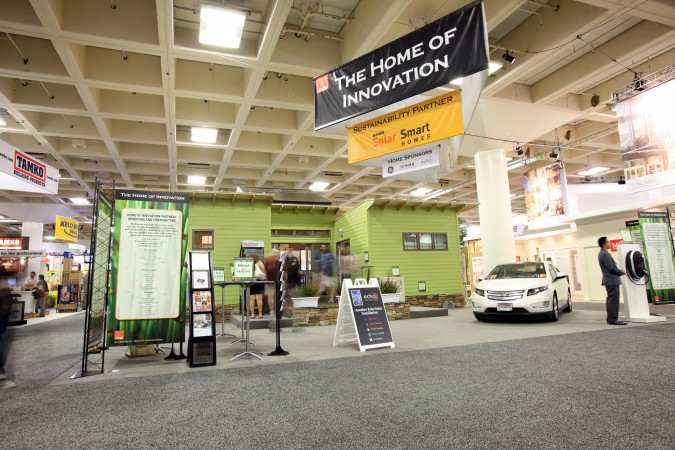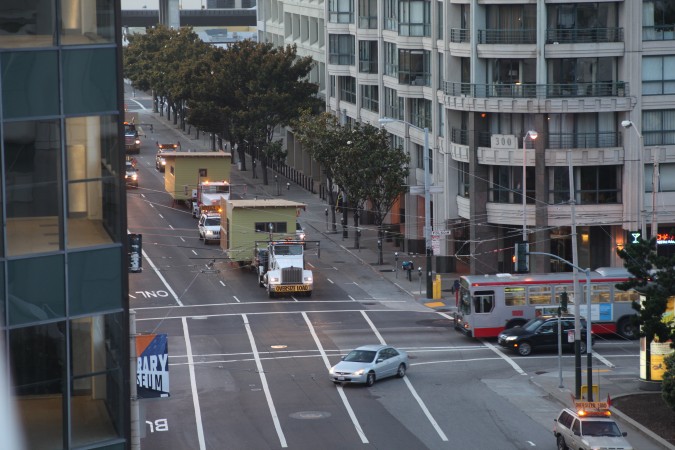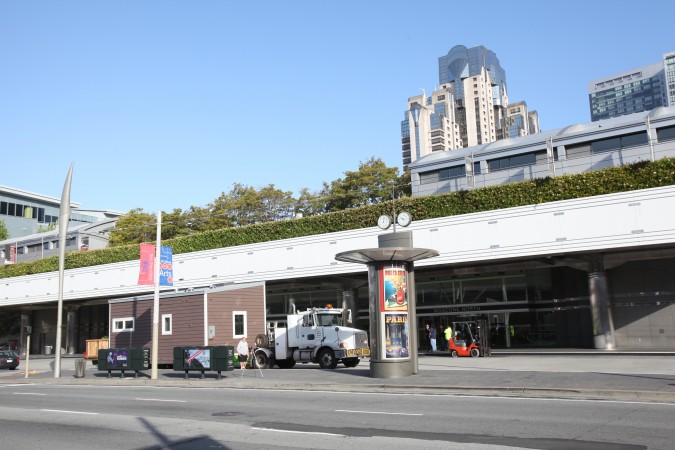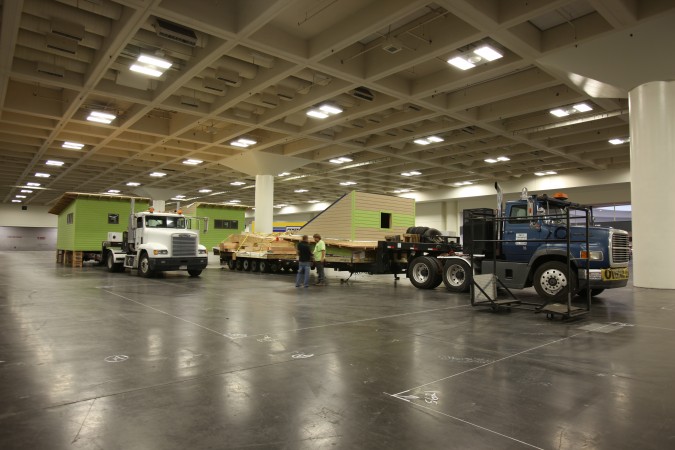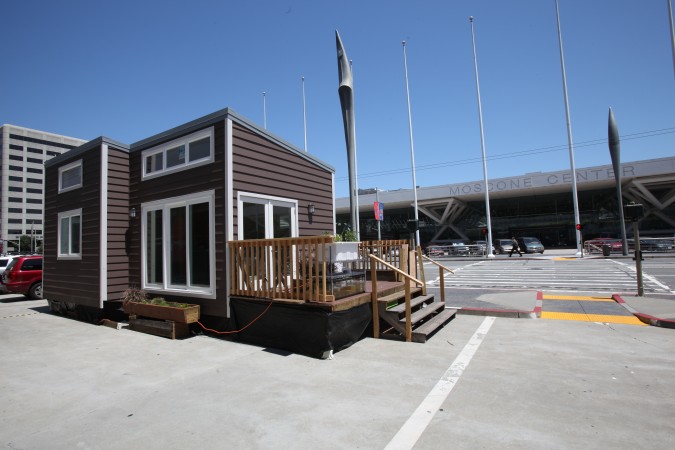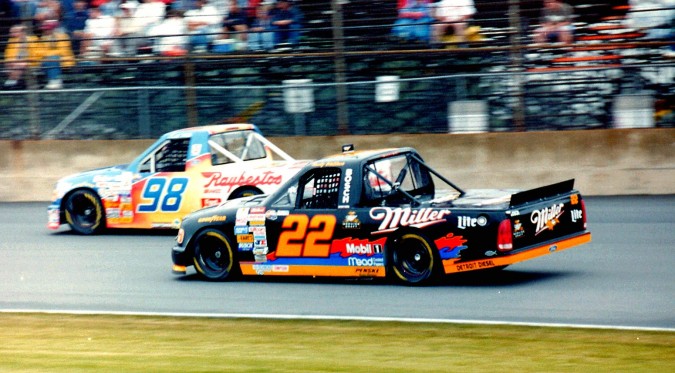Archive for the ‘Home’ Category
It pays to challenge the assessed value of your home
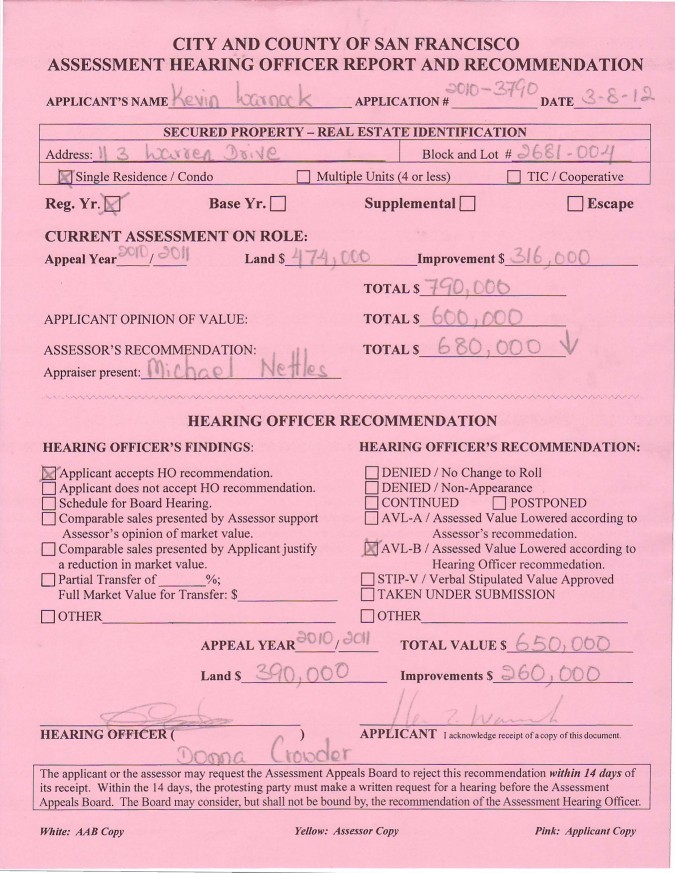
City and County of San Francisco Assessment Hearing Officer Report and Recommendation for Kevin Warnock, March 8 2012
On Thursday, March 8, 2012, despite my having a bad cold and feeling awful, I had a financially remunerative day.
I attended my assessment appeals hearing for my house. I had applied for a reduction in the assessed value in 2010, but because so many San Francisco property owners are also appealing their assessments, it took until 2012 to get a meeting with a hearing officer.
My property tax in 2010 was just over USD $10,000 if I recall correctly. The current assessment on role above shows a value of just before the hearing of USD $790,000. That value itself is reduced from the original 2010 assessment value. It was reduced at my request via an informal yet written request I made in 2010.
Thanks to declining home prices due to the Great Recession, my 2010 taxes declined to $7,616.70!
My new assessed value as a result of my formal hearing on Thursday is USD $650,000. So I got two meaningful reductions — once in response to an informal request where I didn’t have to appear in person, and the other where I did have to appear in person and present evidence. I presented a full appraisal I paid Christian Koenig of Koenig Appraisal USD $350 for. That was money well spent. Donna Crowder was the hearing officer and Garry Michael Nettles, Jr. was on hand representing the San Francisco Assessor’s office.
I was impressed with how well Nettles had researched the comparable sales my appraiser relied on. In one case the appraisal cited a fixer upper that sold for USD $595,000 but was professionally flipped for $935,000 soon after. I am friendly with the developer that did the flipping, and I saw the result, which was astonishing. My house is not in ready to be flipped condition, so the original comp was more fair than the flipped sales price. I had asked for my appraised value to be reduced to USD $600,000, but got only USD $650,000. Frankly, I think the higher number is right on target, as the comps were for houses not as nice as my house is.
Crowder and Nettles discussed their views in front of me, and they ran calculations on their large plug-in calculators. The hearing took about 15 minutes. I was impressed with how thoughtful and smart both Crowder and Nettles are, and I think they arrived at a number that is neither too high or too low.
I am pleased and relieved.
This happy result is something of a surprise, given how critical I was of the Assessor-Recorder’s office the last time I wrote about it on this blog. In brief, the office is so overwhelmed that they routinely hold customer checks for services for months before cashing them. When I was there paying in 2011 I used cash since the office had held my 2010 check for months before they cashed it. I complained and was told they routinely hold checks. I believed them because I saw checks sitting in the open around their office, including on the counter where I was standing. I could have copied the check numbers and drained the accounts if I were a bad guy. I was appalled and I wrote a critical piece about my findings. I don’t think my piece hurt me at the hearing, which is a relief. I looked in the Assessor-Recorder’s office on Thursday, and I didn’t see any personal checks laying around for the public to view, so maybe my earlier blog post was discovered by those in authority and changes were made. I relayed this story of holding checks to a teller at San Francisco Fire Credit Union, where I hold my checking accounts, and learned that they were familiar with San Francisco holding checks so long that they become impossible to cash due to how old they are. If a random teller knows about this issue, it must be pervasive. I hope my blog post about this was headed. This is an issue of real importance because holding checks causes people to overdraw their accounts, which results in big overdraft fees, which is a drain on society.
My tax rate is 1.1718%.
The Zillow home value website shows my house value as of March 8, 2012 to be USD $756,000. When I got married in 2008, the Zillow value was about USD $1,050,000. When I got divorced in December 2011, the Zillow value was far lower. Even the far lower Zillow value today is far higher than my new assessed value.
Since I plan to stay in this house indefinitely, I am thrilled the value is so low.
I paid USD $740,500 in 2001 or 2002 when I bought the house, which was far higher than the asking price of USD $619,000.
I had to outbid 19 other buyers to win this house, but it’s a great house with a spectacular view and copious free street parking for guests and housemates.
I was told to expect my refund check from San Francisco within six to eight months, but I won’t hold my breath, since one of the homeowners in front of me at Thursday’s public hearing said he had won an assessment reduction for 2009 but still hasn’t received his check, roughly a year after his hearing for that year.
Zimman’s sells sumptuous fabrics at fair prices
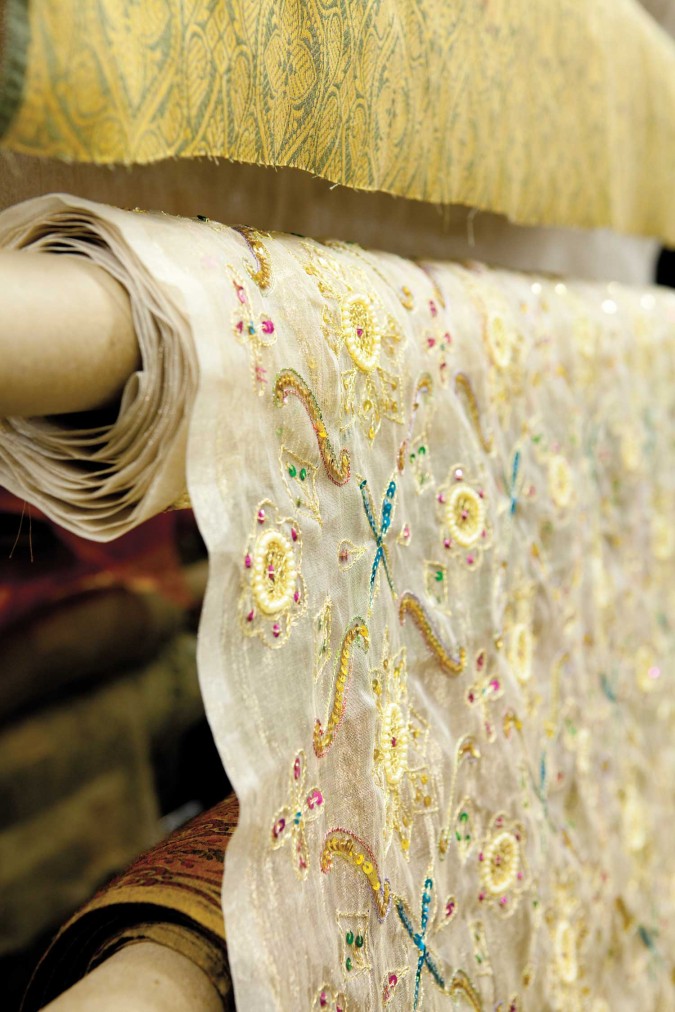
Fabric for sale at Zimman's of Lynn, Massachusetts, USA. Picture from http://nshoremag.com/zimmans-of-lynn/
The last time I worked for others, I worked for Jeff Zimman, Susan Philpot and Hank Barry.
I was at Cooley, LLP, a powerhouse law firm in Silicon Valley.
Zimman chaired the Document Automation Committee at Cooley, the entity to which I reported in my role as Computer Aided Lawyering Project Leader.
Jeff Zimman is currently the Chair of Posit Science, Inc., which produces software to help build and maintain cognitive function. Listeners to KQED public radio in the San Francisco Bay Area, where I live, are familiar with Posit Science because this software is always one of the gifts one may select if one becomes a financial sponsor of that radio station. I love KQED, by the way, and I listen to it almost every day. You may sponsor KQED online at this link.
Even though I have known Zimman for a majority of my professional life, I know little about him as a person. I know the basics – that he’s married to architect Ken Ruebush, the brother of my friend Susan Ruebush. I know Jeff Zimman used to be an investment banker at Lazard before co-founding Posit Science. I know Jeff Zimman used to be a newspaper reporter before he went to law school.
Thanks to Facebook, a currently well known social networking website based in Silicon Valley, I now know something new about Jeff Zimman.
Jeff Zimman’s grandfather Morris Zimman 103 years ago founded a treasure of a retail store named Zimman’s. This store is so lush, sumptuous and glorious that articles have been written about it. Gushing articles so colorful that they make one want to make a special trip to Zimman’s just wander the isles and touch the products.
What does Zimman’s sell? Here’s how their website explains it:
“Zimman’s offers one of the largest selections of decorative fabrics and passementerie, combined with a wonderful assortment of premium furnishings, exquisite accessories, lighting, rugs and custom products.
Located in Lynn, Massachusetts, Zimman’s is the country’s leading fine fabric, furniture, lighting and decorative accessories destination.”
Before today, I had never heard the word passementerie. This is what WikipediA has to say initially about passementerie:
“Passementerie or passementarie is the art of making elaborate trimmings or edgings (in French, passements) of applied braid, gold or silver cord, embroidery, colored silk, or beads for clothing or furnishings.
Styles of passementerie include the tassel, fringes (applied, as opposed to integral), ornamental cords, galloons, pompons, rosettes, and gimps as other forms. Tassels, pompons, and rosettes are point ornaments, and the others are linear ornaments.”
Zimman’s sells fabric.
Perhaps the nicest fabric I have ever seen — have a look at the photograph above.
The only store I can compare it to in the Bay Area is Britex Fabrics. But Britex is a premium priced emporium located in costly Union Square retail space. Prices at Britex are sky high such that it’s a turnoff to even browse.
Zimman’s by choice is located next to a 99-cent discount store, so their rent is affordable. The savings are passed on to customers, which results in Zimman’s being both affordable and magical at the same time.
It’s as if Neiman Marcus moved into a Costco and reused the same shelving to sells its luxury goods. Prices could drop dramatically if they didn’t have to support the exceptionally luxurious stores that they’re famous for.
Here’s what Michael Zimman, Jeff Zimman’s brother, has to say about the store he now rus:
“It’s an unlikely spot for this type of business to evolve,” agrees owner Michael Zimman, grandson of the store’s founder, Morris Zimman. “But it works for us. You need a lot of space, which we have, and we’ve been doing it for 103 years, so we’ve developed a broad reputation.”
“With arguably the largest selection of textiles on the East Coast, if not in the country, and a carefully curated array of furniture and decorative items, Zimman’s has become a destination business, surviving the changing landscape of retail by smart specialization and unbeatable prices.
Stepping into Zimman’s can be a daunting proposition. With about 40,000 square feet—nearly an acre—of shopping spread over three floors, some customers, especially those seeking textiles, may not know where to start. After all, Zimman’s has at least 25,000 bolts of fabric in house—but who’s counting? “It might be 50,000. It might be 100,000. We don’t stop to count,” Michael Zimman says. “But that’s part of what makes us unique. We’re for people who want to step back into the way things were and have an experience of shopping in an emporium, putting their hands on textiles and furniture… It’s a throwback, and people really love it.””
I do wonder after reading Coffey’s article if Jeff Zimman also spent a lot of time at Zimman’s while he was growing up, like his brother Michael did. Coffey writes:
“Zimman’s dedication to the old ways has deep roots; Michael learned the business at his grandfather Morris Zimman’s knee. Morris opened the store in 1909, and Michael says he cannot remember a time when he wasn’t involved in the business. In fact, if he wanted to see his father, who worked from 10 a.m. until 10 p.m. six days a week, he had to go to the store. While in the second grade, Michael would take the bus from the family’s home in Marblehead to swim at the Boys’ Club on Lynn Commons. After swimming, Zimman would wend his way through back alleys and residential neighborhoods in the waning afternoon light to get to his father’s store for a ride home.”
It is highly unusual for a lawyer to found a company. Jeff Zimman is certainly an entrepreneur. Posit Science is not an easy kind of company to start. They raised tens of millions of dollars in venture capital. They have world renowned scientists like Michael M. Merzenich, PhD on the team (see Merzenich’s extensive WikiPediA entry here). What Jeff Zimman has accomplished makes my head spin compared to what I have done in the software field.
I suspect that it is extremely likely that Jeff Zimman was profoundly influenced by his grandfather Morris Zimman, the founder of Zimman’s. Watching his grandfather build and operate a successful business had to help inspire him to leave the relative tranquility of lawyering and banking to become a startup founder. I run into Zimman only about yearly, but I will ask him about this connection the next time I see him.
Finally, a fun fact near to my heart — Zimman’s used to advertise on the sides of city transit buses. There is an animated graphic that plays as soon as you arrive at the Zimman’s website that shows the bus ‘driving’ from right to left across the top of the website. I was able to capture the bus in a screen shot after a few tries with Snag It screen capture software. Here is the result. As my readers know, I am a huge fan of buses, and I own a bus even larger than the one below, although now it’s a motorhome.
The Red Shoes
Last night I watched The Red Shoes on Blu-Ray Disc.
What a beautiful movie. The colors are astonishing. This is a Technicolor movie — the most beautiful Technicolor movie I’ve ever seen.
“What — but you don’t have a TV Kevin!”
I didn’t have a TV — now I do. After going several years without a television, I broke down and bought a modest Vizio flat panel set. It was the cheapest set at Costco in the size I wanted, which is large enough for house movie nights at home with my four roommates. I installed it over the fireplace in the living room between my beloved Polk SDA SRS speakers I bought new in 1986.
My new television is a liquid crystal display model. The plasma sets that were even cheaper looked miserable by comparison — gray and washed out. I was shocked. The Vizio looked just as good as the LCD set at twice the price immediately adjacent to it. Why would someone buy that set I wondered?
The really impressive purchase though wasn’t the flat panel, it was the Vizio Blu Ray player, at just USD $119.00. This player includes Vizio ‘apps’ software applications. The Vizio apps allow you access to Netflix, Vudu and Pandora Internet services via your television using the Blu-Ray remote control. I already had a Netflix account, and it was easy to activate so that it’s accessible from the Blu-Ray player.
The quality of the streaming is just shy of Blu-Ray quality, and much better than standard DVD quality. I am impressed. I have only had the system stop playback for buffering once in about 10 hours of use so far. The online reviews are mixed. Some have trouble keeping the player connected to Wi-Fi and have to go through setup every time they turn the unit on. I had to go through setup twice, but only twice. I read that current firmware fixes the problem, so maybe my unit has the current firmware. I have 90 days to exchange the unit at Costco, so I’m not worried.
Dinner and movie night on my still fledgling urban homestead is Sunday night. We watched the first two episodes of the cable television drama Mad Men. I am already hooked on the show and I had never seen it before. I haven’t had a cable television subscription since mid 2008. The savings from canceling cable paid several times over for my new Vizio TV and disc player. The cable companies really should fear Netflix, which could well put them out of business over the next decade.
For dinner, we made jambalaya for the main course. We had watermelon for desert and Whirley Popped popcorn during the Mad Men episodes.
Now, back to The Red Shoes.
I rented this movie because reportedly it’s one of Martin Scorsese’s favorite movies, and I like Scorsese.
Here’s the abstract from Wikipedia:
The Red Shoes (1948) is a British feature film about a ballet dancer, written, directed and produced by the team of Michael Powell and Emeric Pressburger, known collectively as The Archers. The movie employs the story within a story device, being about a young ballerina who joins an established ballet company and becomes the lead dancer in a new ballet called The Red Shoes, itself based on the fairy tale “The Red Shoes” by Hans Christian Andersen. The film stars Moira Shearer, Anton Walbrook and Marius Goring and features Robert Helpmann, Léonide Massine and Ludmilla Tchérina, renowned dancers from the ballet world, as well as Esmond Knight and Albert Basserman. It has original music by Brian Easdale and cinematography by Jack Cardiff, and is well regarded for its creative use of Technicolor. Filmmakers such as Brian De Palma and Martin Scorsese have named it one of their all time favorite films.
I am not a movie critic, so I hesitate to try to review this movie. My long ago girlfriend Muire Dougherty has a degree in film from San Francisco State University, and she didn’t think much of the last film I tried to critique, The Unbearable Lightness of Being. I rewatched that movie 20 years later, and she was right that the movie wasn’t very good. I just checked on WikiPedia and it says the author of the book on which that movie is based was so unhappy with the result that he never allowed any further adaptations of his writing.
I’m pretty sure Dougherty would approve of The Red Shoes, but I can’t tell you why with authority. I thought about Muire because when we dated she used the first name Moira rather than her real first name Muire, and the star of The Red Shoes is Moira Shearer. I don’t know and have never known anyone else with the name Moira.
I give The Red Shoes my highest rating even though I can’t properly explain why.
Litre of Light – nearly free solar lights made with plastic water bottles and bleach
Sometimes I learn of an idea that shocks me with its brilliance.
Today I will describe such an idea. It’s called the Litre of Light.
Here’s the summary from the project’s website, Isang Litrong Liwanag, which translates to ‘A litre of light’:
“Isang Litrong Liwanag (A Liter of Light), is a sustainable lighting project which aims to bring the eco-friendly Solar Bottle Bulb to disprivileged communities nationwide. Designed and developed by students from the Massachusetts Institute of Technology (MIT), the Solar Bottle Bulb is based on the principles of Appropriate Technologies – a concept that provides simple and easily replicable technologies that address basic needs in developing communities.”
A Solar Bottle Bulb is a clear water or soda bottle filled with tap water and a little bleach. This bottle in embedded into the roofs of houses, with part of the bottle outside, and part of it inside. There is sealant around the hole to keep the roof weather proof. When the sun hits the outside part of the bottle, a lot of light reaches the inside part of the bottle. The water inside the bottle makes the light omnidirectional, mimiking an electric light bulb. The bleach keeps the water clear for years. Without the bleach, the water would quickly turn green with algae. Without the water, there would be a bright spot on the floor, surrounded by relative darkness.
Each Solar Bottle Bulb produces about as much light as a 60 watt incandescent light bulb, according to the video transcript linked to in this sentence.
I wish I could take my Canon 5D Mark II into some houses with these bulbs installed and get some really high quality still photographs and video, to help spread the word about this really bright idea. Light bulb entrepreneur and proponent Thomas Edison would be pleased.
The beauty of the Solar Bottle Bulb is that it works and it’s really affordable, at about P150 to P200 (USD $4.66 at today’s exchange rate) per home, installed, according to Alfredo Lim, the mayor of Manilla in the Philippines, pictured above on the right. That 150 to 200 peso cost is per home, not per bulb.
I am going to install these in any eco home I build down the road. I have a big collection of glass bottles to choose from. I’m not sure if glass is as suitable as plastic, but I would prefer to use glass if it can be made to work reliably.
Hacking neighbor from hell
I have four roommates. I love having roommates, especially since we are all interested in urban homesteading.
One of the first things new roommates ask for when they move into my house is ‘what’s the wi-fi password?’
I have to write it down and hand it to them, because I use a complicated password dozens of characters long.
Am I being silly?
I don’t think so.
Have a look at this Wired article entitled Hacking neighbor from hell.
Here’s the first few paragraphs that sumarize this crazy story rather well:
“A Minnesota hacker prosecutors described as a “depraved criminal” was handed an 18-year prison term Tuesday for unleashing a vendetta of cyberterror that turned his neighbors’ lives into a living nightmare.
Barry Ardolf, 46, repeatedly hacked into his next-door neighbors’ Wi-Fi network in 2009, and used it to try and frame them for child pornography, sexual harassment, various kinds of professional misconduct and to send threatening e-mail to politicians, including Vice President Joe Biden.
His motive was to get back at his new neighbors after they told the police he’d kissed their 4-year-old son on the lips.”
Fortunately, one of the victims is a lawyer, and his firm had access to a network specialist that installed a packet sniffer to figure out what was happening. The sniffer logs led the FBI to raid the home of the neighbor, where lots of incriminating evidence was found, including the child pornography the criminal posted in the name of the victim.
This episode reminds me of the 1990 Melanie Griffith and Michael Keaton movie Pacific Heights, where a tenant terrorizes his landlord in an effort to get the landlord to sell the duplex at a low price to the tenant. The tenant stops at nothing, I recall, and even deposited a big box full of large cockroaches into the landlord’s unit via gaps around common water pipes that connected the units. Pacific Heights is one of those movies you remember a lot about even years after seeing it.
The World’s greatest light bulb
I just read a Slate article that was so enthusiastic about a product I thought I was reading the Hammacher Schlemmer catalog.
The World’s greatest light bulb — Dump your fluorescents and incancesdents for this amazing new LED bulb reads the article title.
Wow, that’s a powerful endorsement.
Here’s the key paragraph from the story:
“Switch Lighting claims to have solved all of those problems. When I arrived at Switch, Brett Sharenow, the company’s chief strategy officer, showed me two lamps. Inside one was a standard 75-watt incandescent bulb. Switch’s 75-watt replacement bulb, which uses only 16 watts of power, was plugged into the other. The lampshades prevented me from seeing the bulbs directly—I couldn’t tell which lamp contained which bulb. When Sharenow turned on the lamps, the light from each lamp looked identical. The moment was completely undramatic, and that was the point. Switch has spent years developing bulbs that produce something thoroughly unexceptional—light that looks exactly like what we’re used to.”
Very sadly, there are no pictures of these two side by side shaded bulbs to prove the writer’s point. Perhaps there’s a photo embargo until the bulbs hit stores later this year, in the Fall of 2011.
According the the story, each bulb will cost about USD $20 or so and last 20,000 hours.
The bulbs are made by Switch Bulb Company, and are called SwitchXX where XX is the wattage of an incandescent bulb that puts out the same amount of light as the LED bulb. For example, a Switch100 puts out the same amount of light as a conventional 100 watt incandescent bulb.
I’ve installed dimmable fluorescents in all the can lights in my ceiling, and they are far better than incandescent bulbs, and use far less power. I pay about USD $13 for each bulb, so I can see spending USD $20 a bulb for these LED bulbs, which should last much longer than a CFL bulb.
I hope Switch Bulb Company later offers a reflector flood version of its LED bulb so I can replace my existing ceiling installed reflector CFL bulbs.
I love the last name of the Chief Strategy Officer of Switch — ‘Sharenow.’
2011 PCBC Home of Innovation video tour – June 24, 2011
My friend Kevin Casey at New Avenue, Inc. got the PCBC Home of Innovation installed on time for the opening two days ago of the 2011 PCBC convention in San Francisco, California USA.
This was a fantastic effort on Casey’s part because the show gave him a short deadline to complete the ambitious project. I’m not privey to the exact timeline, but I am pretty sure he had under a month to build, deliver and erect this ~750 square foot house inside the Moscone Center, the largest convention center in Northern California.
I wrote last week about this house being delivered to Moscone.
Today I shot a walk through video during the public hours of the show. Today is the final day of the show, so there are fewer attendees than there were the first two days. This makes for a cleaner video.
As you watch this video, remember this house was designed, built, delivered and assembled in about a month! If you work for a trade show and need a demonstration structure built quickly, I suggest you consider working with New Avenue. I have no connection with that company, but Casey has allowed me to show off my aquaponics system at one of his other houses, which I appreciate.
Video of New Avenue, Inc. houses being delivered to Moscone Center for PCBC June 22-24, 2011
In my blog post from yesterday, June 17, 2011, entitled New Avenue brings two of its homes to Moscone Center for the Pacific Coast Builders Conference June 22-24, 2011 I wrote about the spectacular delivery of two houses to the Moscone Center in San Francisco, California USA.
I used my Canon 5D Mark II camera to shoot high definition video of the delivery process. HD video takes time to process and upload, so the clip wasn’t ready by the time I published yesterday’s story.
As promised, here is the clip I assembled of the houses arriving from San Jose, California.
The first part of the video shows 3 large semi trucks driving up 3rd Street and descending down the loading dock adjacent to Moscone South. Moscone Center is composed of 3 large halls – South, North and West, built in that order over years. I follow these trucks into Moscone South, which was the incorrect hall, as workers told me the South hall is undergoing renovations and thus shows aren’t currently being held in it. Even though this was a mistake on the truck driver’s part, I include the video because most readers of this article will have never seen the South hall totally empty, like it is in this clip. The South hall is the most impressive of the three halls because there are no support columns in the middle of the room. It’s nearly a square block of unobstructed space, and it’s stunning to behold devoid of all the commotion present when it’s occupied.
Off video the trucks then snaked through the tunnel underneath Howard Street into Moscone North, which is where the PCBC conference will take place June 22-24, 2011.
Before we see the houses inside the North hall, the video switches to the driveway for the North hall, on Howard Street. A 4th semi truck brings a second house, complete with deck and my aquaponics system, and parks it parallel to Howard Street and the entrance to the hall.
The video concludes with a clip showing one of the semi trucks inside the North hall driving out from under one of the parts of the first house after that house was temporarily set on blocks. Although it’s not shown in this video, the house pieces were later lowered from their blocks onto their ‘foundations’ and the house pieces were put together to form one elegant ~750 square foot home that will be a featured attraction at PCBC next week.
New Avenue brings two of its homes to Moscone Center for the Pacific Coast Builders Conference June 22-24, 2011
My friend Kevin Casey is on a roll with his New Avenue, Inc. startup.
Today he was literally on a roll, or, rather, two of his company’s products were rolling up Route 101 from San Jose, California to San Francisco, California, about 50 miles.
New Avenue designs, finances, builds and installs quality ADUs, which stands for Accessory Dwelling Units. ADUs are commonly known in the US as inlaw units or granny units. An ADU is a smaller house destined to be a second home on a single family residential lot. It’s public policy and official law in California that cities allow ADUs.
The two New Avenue products rolling up 101 are houses ready for decades of full time living. These are not cheap mobile homes destined for the scrap heap in 15 or 20 years. These are quality homes built with high quality materials and appliances. New Avenue homes are luxurious enough that they make sense in even the backyards of wealthy Californians.
I’ve a big fan of what Casey is doing, and I’ve written here about New Avenue four times before. I have even toyed with the idea of ‘competing’ with Casey by making ADUs from recycled ocean shipping containers. I’ve shelved those plans to focus my efforts on gOffice and its companion blog. But the concept of living in a smartly designed smaller home that consumes fewer resources is profoundly appealing to me, which is why I follow Casey’s progress with such fascination.
As I wrote about here last month, Kevin Casey invited me to build an aquaponics system for one of his homes. That home has been on public display in front of the new City Hall in San Jose, CA for the last six weeks or so. San Jose was gracious enough to allow Casey to reposition the house for a week so it could be shown publically at the Pacific Coast Builders Conference (PCBC), happening at the Moscone [Convention] Center in San Francisco June 22-24, 2011, next week.
San Jose paid Casey to build the house as part of a green technology exhibit called the San Jose Green Vision Clean Energy Showcase funded by the United States Department of Energy with Recovery Act money. It was via the San Jose exhbit that New Avenue came to the attention of the PCBC conference, which paid Casey to design and build the larger ~750 square foot house you see disassembled on the three semi trucks in the picture at the top of this article. This green home which is also green in color, will be a centerpiece of the PCBC convention, and it is literally in the center of Moscone North. The houses were delivered at 5:50 this morning, just as the sun was rising, so that’s why the picture is dark… note the reflection of the headlights on the pavement. I was extremely lucky that the Moscone parking garage opened 15 minutes early at 5:45am. If it hadn’t, I wouldn’t have been six stories up with a windowless view of 3rd street to take the picture above. Thank you to the garage staff!
The San Jose exhibit house, painted brown, is now in the driveway in front of Moscone North, at street level. This means thousands of cars will pass this house for the next week or so, and thousands of people will walk past it. As far as I know, no admission will be charged for members of the public to tour this house, so you don’t need to be a paid attendee of the PCBC conference to pay a visit.
The aquaponics system I built for Casey is on the front deck, just as it is when the house in in San Jose. The plants in the grow bed survived the windy truck ride North without cover, to my amazement. I didn’t want to risk the fish splashing out of the aquarium onto the roadway, so I removed them yesterday and brought them home with me in my car. I cleaned up the tank, filled it with declorinated fresh water and reintroduced the fish to their home this afternoon, once the New Avenue house was safely parked in San Francisco.
I will be on hand during the PCBC conference to explain aquaponics to visitors. I already told a dozen people about aquaponics today — mostly Moscone Center staff, including Lorenzo, a journeyman painter who engaged me in 20 minutes of conversation about small home living and gardening. He was extremely enthusiastic about aquaponics and the New Avenue house… he really wanted the house for his vacation property where he goes hunting and fishing.
I shot video of the house moves, and it’s being encoded for upload as I write this post. I will add a companion post tomorrow to show that video. These houses are so large they needed multiple escort vehicles to get to San Francisco safely. It was quite a spectacle watching the 750 square foot home be delivered by three trucks into the convention center. Be sure to have a look at that video on June 18, 2011.
I want to drive my bus conversion around the world to promote green living
Last year I read the book Take your RV to Europe by Adelle and Ron Milavsky. This book was inspiring, for it made me want to take my RTS bus conversion to Europe, and I have been planning this trip now for about a year. Last year I told my entire family about my plans.
The authors of Take your RV to Europe took their Toyota based class C RV to Europe, and now leave it parked there full time so they can fly over and go on extended multi-month voyages as they please without the hassle of shipping the vehicle over for each trip.
I got shipping quotes last year around June of 2010, and the price is about $7,000 each way to take my 40 foot long conversion to The Port of Rotterdam, Netherlands from The Port of Oakland, California, the nearest large ocean shipping port to my house.
My plan has been to spend a solid year traveling and living in the conversion full time. The book makes it clear that Europe is very friendly to recreational vehicles, much more so that is the United States. In most medium and large European cities there are RV parks, unlike in the US. For example, there are large RV parks in London and Paris. The one in Paris is walking distance to a Metro station… just outstanding. There are no RV parks in San Francisco, where I live, one of the most popular tourist destinations in the world… just awful.
Take your RV to Europe makes a strong case that shipping your RV to Europe is the least costly way to travel for an extended time in Europe.
Fuel is costly in Europe, granted, but distances are short compared to the US.
Restaurant food is costly, so being able to cook on board the RV saves a fortune compared to staying in hotels or even youth hostels. I stayed in a couple of different youth hostels in 2009 when I was in Amsterdam, Netherlands, and I recall paying around 40 Euros a night, which really adds up, particularly since you need to buy lunch and dinner on your own. If I were to do an extended tour of Europe, I would hope I had a new girlfriend or wife by then and would be able to bring her along.
While it may be a while before I embark on a European bus conversion adventure, I wanted to share with you my newest variant of my dream, which I am really excited about:
I want to elevate my trip from a mere road trip into a voyage to change the world.
As you know now from my frequent posts about my plans to build many green features into my beloved RTS, I am passionate about living efficiently. While I own a 1,600 square foot house in the center of San Francisco, California USA, I don’t use all that space for just myself. I rent out most of it to my 4 roommates. Divided evenly, that comes to 320 square feet per person, which is close to the area inside my bus conversion.
Most of the inhabitants of the world live in dwellings much smaller than the average US house.
There are many great advantages to choosing to live in smaller dwellings — interest savings, maintenance savings, time savings, energy savings and mental energy savings, for example.
My green bus will be loaded with technology that will showcase how green living can still be richly pleasurable and rewarding. Few people have ever stepped foot in a truly green home, in part because few such homes exist. They certainly don’t exist in every city and town in the US and Europe. But my green RTS can visit such towns and cities with relative ease.
I hope to be able to change the world by showing people my green bus and telling them about it. I am already working hard to develop my journalism skills by building up my audience for this blog at KevinWarnock.com. I am not scared to speak in public, and I’ve been interviewed on the radio before, while I was CEO at Hotpaper.com, my first Internet startup from the first dot com boom in the 1990s.
I envision arriving in a new city or town and parking my green bus conversion right in front of the venue I will be speaking at. There, I will spend the night. I will address the group assembled by my host and then invite the group to tour my green home. Since it will be my actual home for an extended period, it will be believable in a way that I think most model futuristic homes are not, because they don’t look lived in, because they are not lived in.
I will get my start on this public speaking circuit in the San Francisco Bay Area, where there are many receptive audiences for my green messages. As I build my blog readership and get speaking credits, I hope to get more radio interviews and then television interviews.
At this point, when my ideas are getting more attention, I hope that I will be able to recruit sponsors to help me pay for my eventual adventure traveling around Europe, which will cost perhaps $50,000 for the year. I have been thinking of getting sponsors for a while now, but I really decided to try to make it actually happen when I read the inspirational stories at PlanetSolar.org, which describes a solar electrically powered yacht circumnavigating the globe right now to help publicize the potential of solar electricity. The owners of the Planet Solar craft got sponsors to help pay for the project, which probably has a cost surpassing $20 million, since the boat alone reportedly cost $17.5 million. I first learned of the PlanetSolar project in National Geographic magazine, which my roommate Marie had on the dining room table last week. Thank you Marie.
I need to make friends with the Planet Solar team, including Patrick Marchesseau, the ship’s master.
My green bus conversion offers many opportunities for sponsorship. With slide out trays, I could probably fit $20,000 of solar panels on the roof, which would be enough to fully air condition the vehicle on a hot sunny day. For a large house, it might take $200,000 of solar panels to do the same, which is just too expensive for most to even consider. But if people could reduce their living space, all kinds of formerly cost prohibitive technologies become affordable. While $20,000 is still a lot of money, over time it’s not much, considering those solar panels will last for a quarter of a century. Electricity will cost a lot more then than now, so after inflation, the $20,000 really won’t seem like much. Right now I only have $1,000 worth of solar panels on the roof, due to budget constraints.
Buses routinely have billboards on their sides, so sponsors could show off their participation in return for their help. Such ads would help me spread the word as well, as they would draw attention to me and help me start conversations wherever I park.
When I downloaded the picture above of the Planet Solar craft navigating through the Panama Canal, I noticed the SunPower logo on the side. My friend Matt Campbell works at SunPower. Maybe he’ll introduce me to their sponsorship group? Are you reading this Matt?
Once I get sponsors, I would probably have to register my RTS as a commercial vehicle and begin paying commercial vehicle insurance rates. As a side note, I insure my RTS with Progressive Insurance, and I recommend this company.
I want to be perfectly clear that currently I accept no sponsorships and am not running any kind of a business with my RTS. Right now it’s my hobby with no business angle whatsoever. It actually costs me a lot, as you might well guess. Commercial insurance is expensive, so I would love to one day get an insurance company as a sponsor, so they could insure it as part of their sponsorship.
Why would an insurance company care? I suspect that solar panel insurance is going to be big business one day, as having tens of thousands of easily re-sellable and highly durable panels just sitting on a roof makes them a target for thieves.
With the right sponsors, I might one day even upgrade the vehicle drivetrain. It is a bit ridiculous to be advocating super green living while driving a vehicle that gets only 11 miles to the gallon on the freeway. It would be much better to use a modern electric drivetrain, from one of the innovative startups working hard on such things, such as Motiv Power Systems, which recently received a 7 figure government grant to develop electric power-trains for shuttle buses. These drivetrains are expensive for non transit system use, but with a sponsor they could be practical. If my green bus conversion were all electric, I could see getting featured on prime time network and cable television shows in every country I visit. I know the founders at Motiv Power Systems, and they are passionate about their dream to electrify transit buses. I’m not sure their drivetrains are suitable for intracity travel.
Once I tour Europe, I can then see touring Asia and the United States. I don’t plan to tour the US first as I’ve already driven across the US in my bus once, and the distances are so great I fear I would spend more time driving than speaking and showing, which I believe are key to changing perceptions about how much space is needed for a happy life. I also believe audiences in Europe and Asia will be more receptive to my ideas since their residents already live in smaller dwellings and pay much more for energy than residents do in the United States.
